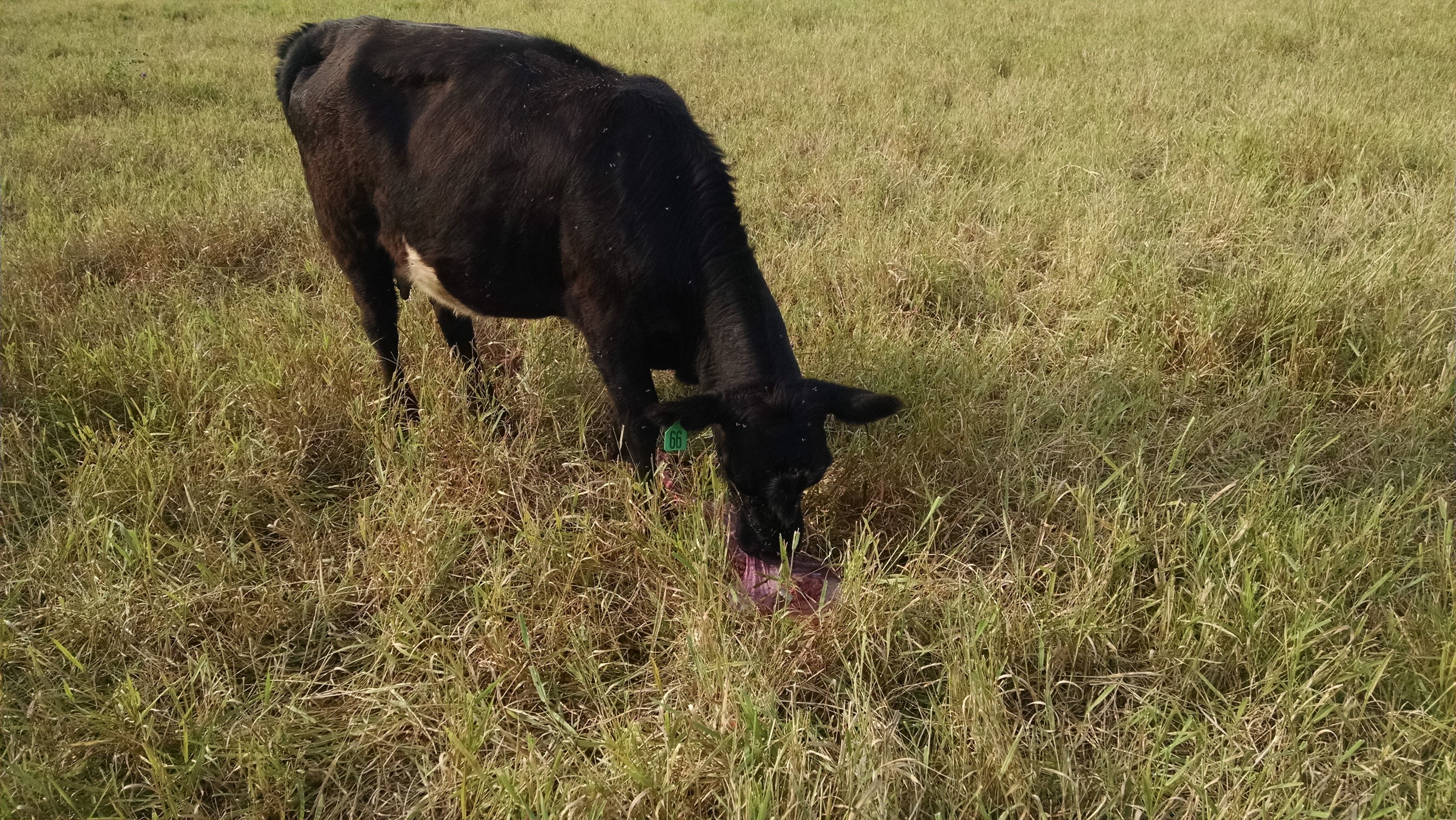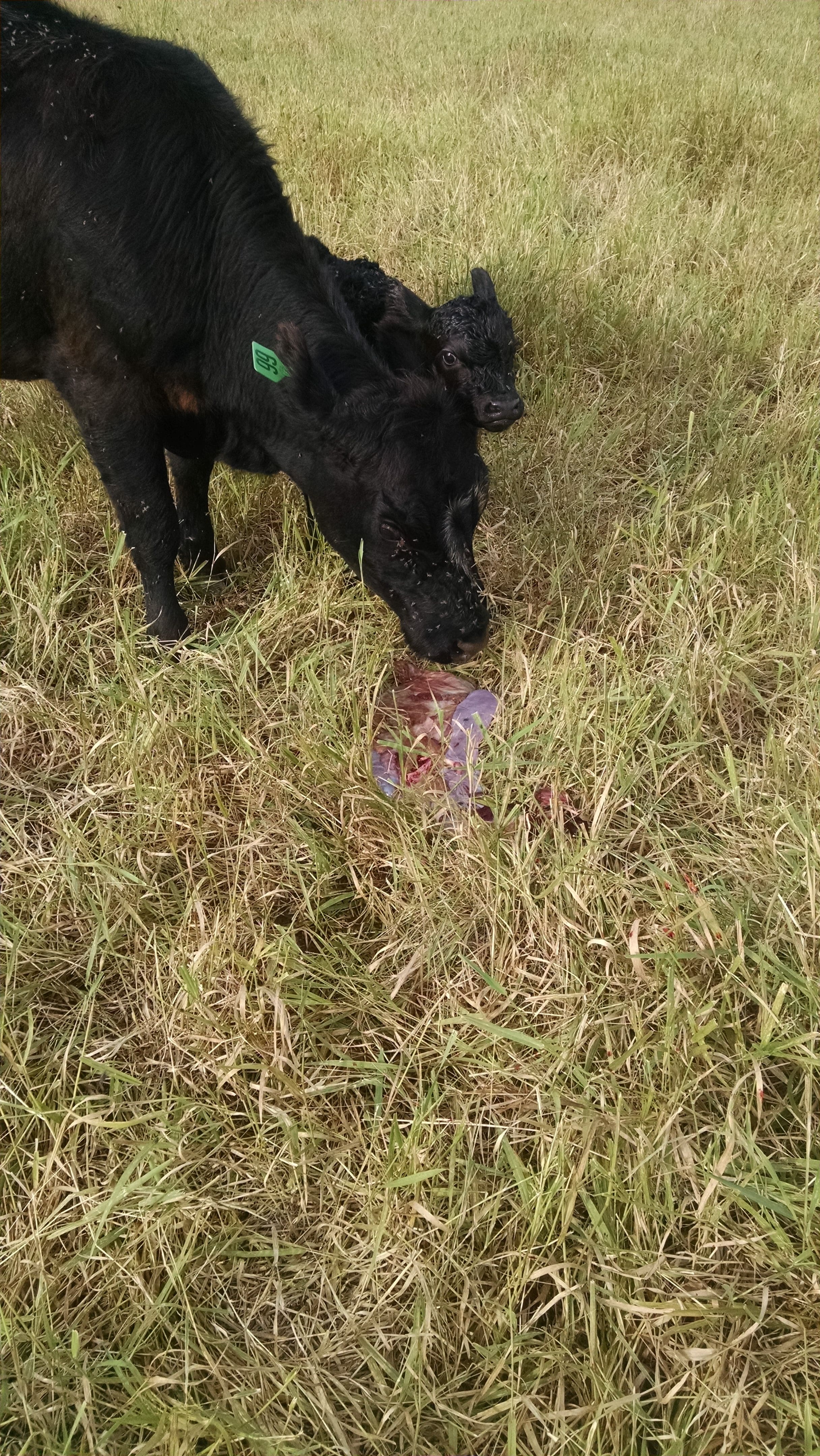No, I’ve never eaten a placenta, human or otherwise. No, I don’t haven an opinion on whether postpartum humans should consume their recently expelled afterbirth, raw, cooked, pelletized, or otherwise. I’d definitely try it if Hugh Fearnley-Whittingstall prepared it with shallots and garlic on foccacia. His River Cottage Meat Book has a place of reverence in our gastronomic library, so I’d try anything he cooked. But I don’t think I’d undertake to prepare a placental pâté on my own.
Most land mammals eat placenta, including all classes of domesticated mammalian livestock except camelids as far as I’m aware. On the farm it isn’t surprising to see the pigs chowing it down; they are omnivorous and they are famously open-minded about food. But it is weird to see herbivores eating placenta, trying to hork down a six foot long composite of membranes and bits of glop and glorp.

Cows are inconsistent placentophages. Many cows don’t touch it at all, some chew on it for a while. I’ve never directly observed a cow eat the entire placenta, but occasionally the placenta is missing the next morning so I assume that unless an opportunistic coyote, dog, or vulture has stolen it, the cow has eaten the whole thing. Ruminants aren’t well suited to consuming meat, so the process is awkward. They do a lot of chewing and slurping. Since they don’t have upper incisors, they can’t take a good bite. Other herbivores with upper and lower teeth (rabbits, horses, etc.) might be better at it. Back when we raised rabbits, the does would always clean up the placentas promptly and completely. After licking and gumming it for a while, cows seem to satiate whatever unknown instincts drive them to do so, and then they leave it alone.

There are different theories as to why animals eat placenta. I am suspicious about anyone claiming to know “the” answer, but I favor theories positing that placenta provides something specifically suited to the nutritional needs of the mother. One oft-cited theory strikes me as particularly inadequate: that prey animals eat their placenta to obscure the fact that a vulnerable baby has been born. Even if we ignore the fact that non-prey animals also have the same placenta-eating instinct and thus there must be a different motivation for predators to eat their afterbirths, it also ignores the fact that birthing areas always have some residual blood, mucous, and placenta pieces, all easily found by olfactory-acute hunters. Consider that many herbivores naturally live in migratory herds with defined birthing seasons and that these herds are tailed by persistent predators. It wouldn’t take a particularly intelligent wolf or lion to notice that a whole lot of babies are being born, placentas or not. In fact, it might be a better adaptive strategy to leave the placenta behind so the predators would have something to eat other than newborn calf. I’ve suggested this idea to the cows, but they just look at me with bland expressions and keep trying to ingest that slimy, unwieldy, stinky organ.

3 thoughts on “Placentophagy”
Hi Dave,
This is a great post (and really informative). I was wondering if you *always* see the herbivores eating the placenta, or do some not eat it. Also, how much material is kind of left there?
Thanks!
Hi Kristy, no the cows don’t always eat the placenta. I can’t give you a percentage with any certainty, but I have often found placentas left behind in the field. And it is possible that some of the placentas that I don’t find have been eaten by coyotes or vultures after the cow and her calf walk away. I don’t know the prevalence of placentophagy for other herbivores. For your other question about how much is left behind, that also varies. Cattle aren’t equipped with upper incisors, so eating something spongy must be difficult and maybe some cows give up sooner than others. Herbivores with complete upper teeth like horses and rabbits would have an easier time of it.
Dave
Hi Dave,
Thanks for this detailed information! I really appreciate it!